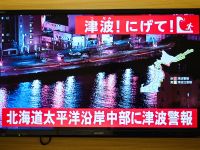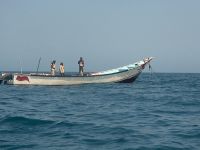NATURAL GAS
Syria's proven natural gas reserves are estimated at 8.5 trillion cubic feet (Tcf). Most (around three-quarters) of these reserves are owned by SPC, including about 3.6 Tcf in the Palmyra area, 1.6 Tcf at the al-Furat fields, 1.2 Tcf at Suwaidiyah, 0.8 Tcf at Jibsah, 0.7 Tcf at Deir ez-Zour, and the remainder at al-Hol, al-Ghona, and Marqada. About half of Syria's gas is non-associated, with the rest either associated (with oil) or "cap" gas.
In June 1999, a new gas field, called North al-Faydh, reportedly was discovered by SPC. The field reportedly has production potential of 35 million cubic feet per day (mmcf/d).
In 1998, Syria produced about 208 billion cubic feet of natural gas, an approximately five-fold increase over the past decade. Syria plans to increase this production even further in coming years, as part of a strategy to substitute natural gas for oil in power generation in order to free up as much oil as possible for export.
A number of new gas-fired power projects are currently under construction or being planned. Another possible source of natural gas is imports -- possibly from Egypt via a subsea Mediterranean pipeline, which would connect Egypt with Israel and Gaza, with the possibility of eventual links to Lebanon, Syria and Turkey.
A key challenge for the Syrian natural gas industry is logistical, with gas reserves located mainly in northeastern Syria, while population is centered in western and southern Syria. SPC currently is working to increase Syria's gas production through several projects.
The Palmyra area in central Syria is the site of much of this activity, including development of the Al Arak gas field, which came onstream at the end of 1995. Other gas fields in the Palmyra area include Al Hail and Al Dubayat, both of which are "sweet gas", and two "sour gas" fields -- Najib and Sokhne. Syria is attempting to expand output at Najib through its central area gas project.
In October 1997, Syria announced discovery of a large new gas field in the Abi Rabah area of the Palmyra region. In addition to supplying a new (completed in 1997), 375-megawatt, power plant at Zaisoun in central Syria, the Palmyra fields also are to be linked with a new pipeline to Aleppo, as well as to the Tishreen power plant in Damascus and the Mhardeh power plant in Homs.
Najib, the fourth and final field to be developed in the Palmyra region, was due to start production in late 1999 at a capacity of 100 mmcf/d. In August, 1998, the Arab Petroleum Investments Corporation announced that it would lend $50 million to the development of a new gas field in the north Palmya area, as well as partial financing of a new gas plant at Najib and Zara. The loan will be allocated to finance gas projects being executed by SPC.
Syria's Jibsah gas treatment plant, which came online in 1988, accounts for more than one-quarter of the country's total gas processing capacity. Jibsah's capacity was increased 88 percent in a project completed during the first half of 1997, and now is being increased again (to 105 mmcf/d from 60 mmcf/d currently). Other Syrian gas processing plants include: the Deir ez-Zour Gas Treatment Plant (since 1991); the Jafra Gas Separation Plant (late 1996); and the Palmyra Gas Processing Plant (late 1996).
In November 1998, Syria Petroleum Company signed a $430-million service agreement with Conoco (the only U.S. oil company currently operating in Syria) and Elf Aquitaine of France to utilize associated gas, now flared, in the Deir ez-Zour oil fields (which currently produce 467 mmcf/d of gas).
Elf Aquitaine and Conoco each hold 50 percent interest in the project, with Conoco as lead operator. In March 2000, the two companies awarded Kvaerner ENC a $160-million contract to engineer, procure, and construct infrastructure for the project. The Deir ez-Zour gas development work will include the construction of a gas gathering system and processing plant.
A 250km/155-mile pipeline that will carry 150 mmcf/d of residual gas to the national grid near Palmyra that serves western Syria. Gas also will be reinjected into Elf's Tabiyeh field to enhance condensate recovery. Initial construction is set to begin in late March 2000.
Elf Aquitaine announced that it is also considering joining a project to build a $175-million, 105-mmcf/d pipeline that would supply power stations in Lebanon with natural gas from Syria.
As increased volumes of natural gas feedstock become available, and given abundant phosphate reserves, Syria is adding capacity to produce fertilizer. At present, Syria has two nitrogenous fertilizer plants and one phosphate-based unit, both located at Homs.
Syria also has plans for significant further expansion in fertilizer production, including a 450,000-ton-per-year nitrogenous complex near the northeastern town of Hasaka. This plant would utilize gas from the Omar field. In addition, a 500,000-ton-per-year triple-super-phosphate plant is being constructed near Palmyra by Bechtel and Makad International.
ELECTRIC POWER
As of 1998, total installed Syrian electric generating capacity was 4.4 gigawatts (GW). This total includes the new Aleppo power plant, which came online during 1997.
With Syrian electric power demand growing at about the same pace as the economy, adding electricity supply capacity is an important national priority. In September 1993, with Syria suffering a severe electricity shortage, President Asad declared that a secure supply of electricity was the right of every Syrian.
As a result of Asad's decree, existing power stations have undergone maintenance and three new generating plants have been built, with three more (the 600-MW al-Zara gas/oil plant, the 300-MW Zeizoun plant, and the 630-MW Tishreen hydro station) planned by 2000.
While power generation capacity in Syria now appears adequate, the country's power distribution network remains a problem. Transmission losses are estimated as high as 25 percent of total generated capacity due to a variety of factors including poor quality wires and transformer stations.
As of March 2000, a project to link the electric power grids of Syria, Turkey, Egypt, Jordan, and Iraq continues to move forward. In September 1999, Jordan and Syria agreed to formally connect their power grids via 400-kilovolt cable in December 1999.
In March 1999, Jordan linked its power grid with Egypt's through an underwater cable in the Red Sea. In August, 1998 Turkey reported that its 115-mile transmission line from the Ataturk Dam to the border region with Syria was completed, but that the elecricity could not be provided due to Syria's delayed construction on the connecting grid. In June 1999, Syria and Iran signed a protocol on electric power cooperation between the two countries.
As part of its strategy to save oil for hard currency exports, Syria has plans to build several natural gas, combined-cycle power plants, and to convert the country's major oil-fired plants to natural gas. Already, the share of natural gas in Syria's electric generation capacity mix has increased from 0.1 percent in 1982 to about 25 percent in 1995.
Two of Syria's largest power stations -- the Mahrada and Banias plants -- have been converted from fuel oil to natural gas in recent years. Gas for these two plants comes from the Palmyra fields. Syria also plans to increase gas usage at the dual capacity (fuel oil or natural gas) Tishreen power plant.
Gas for Tishreen is to come from the Omar treatment plant. In addition to these plants, Suwaidiyah Station II had five new gas turbines installed in 1989, while Suwaidiyah I operates mainly on associated gas from nearby fields. In November 1999, Red Electrica de Espana SA said that it had won a contract to manage Syria's power sector.
On May 19, 1999, the director-general of Syria's Atomic Energy Commisssion signed an agreement with Russia on cooperation in peaceful uses of nuclear power, including construction of two nuclear reactors in Syria.
On February 23, 1998, Syria and Russia had signed an agreement on the peaceful use of nuclear energy, and in July, 1998 the two countries had agreed on a timetable for a 25-MW light-water nuclear research center project in Syria with the participation of Russia's Atomstroyeksport and Nikiet.
Major Environmental Issues: Deforestation; overgrazing; soil erosion; desertification; water pollution from dumping of raw sewage and wastes from petroleum refining; inadequate supplies of potable water
Major International Environmental Agreements: A party to Conventions on Biodiversity, Climate Change, Desertification, Hazardous Wastes, Nuclear Test Ban, Ozone Layer Protection, Ship Pollution . Has signed, but not ratified, Environmental Modification
OIL AND GAS INDUSTRIES
Organization: The state-owned SPC (SPC) controls all oil resources, and directly produces about one-fourth of Syrian output. Al-Furat Petroleum Company (AFPC), of which 50 percent is owned by the Syrian Petroleum Company, and the other 50 percent by three foreign companies (Shell, its U.S. affiliate Pecten, and Germany's Deminex), is responsible for about 65 percent of Syrian output. Sytrol is the state oil marketing company.
Major Foreign Oil Company Involvement: Elf Aquitaine, Royal Dutch/Shell Major Oil Fields: Deir ez-Zour and Jafra in eastern Syria; Karatchuk in the far northeast.
Major Refineries: Syria's 2 refineries are located at Homs and Banias, with a combined crude refining capacity of 242,140 bbl/d. A third refinery is planned for Deir ez-Zour with initial capacity of 60,000 bbl/d, rising to 120,000 bbl/d.
Major Oil Export Terminals: Banias, Tartous, Latakia.
Source: United States Energy Information Administration.
© 2000 Mena Report (www.menareport.com)







